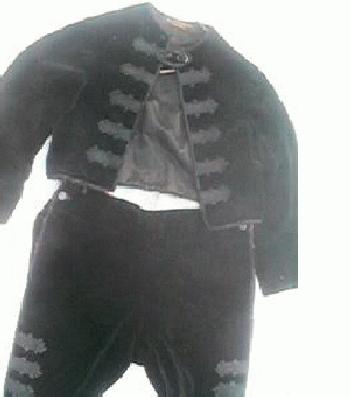
Figure 1.--This fancy black Fauntleroy suit was made by Best & Company. Notice the grey embroidery and grey silk lining. Image coutesy of the CO collection. |

|
Many old vintage garments are of course in museum collections. Some HBC readers collect historical clothing. These collections are of special interest to HBC because they allow a much more careful inspection of garments than is possible in a photographic image. We have information on both Fauntleroy blouses and suits. These actual garments provide information on material, color, construction, embroidery, manucturer, and a host of other details. Some readers have kindly provided us information about the garments in their collections. Some information is also available from internet and other auctions.
The Fauntleroy rage began in 1885-86 after the publication of Mrs. Burnett's sfamous book, Little Lord Fauntleroy. Fancy velvet suits for boys began appearing in the late 1870s and early 1880s for younger boys, but did not begin to take its final form in the popular mind until the population of Mrs Burnett's book Little Lord Fauntleroy in 1885-86. Rather than a fancy suit only occasionally seen, the Fauntleroy suit became almost a uniform of American boyhood for boys from affluent and many middle class families. They were not popular with the boys, but, oh--how mothers loved them. how Soon the syle had spread to Europe and was especially popular in France.
A great deal is know about these suits as there are many photographs of boys in these suits as well as detailed discriptions in fashion magazines. Great care needs to be taken in assessing these suits from the available black and white photography. It suggests that the suits were mostly black. In additiion many of the photographs are of poor quality. Some interesting details on the color, material, and construction cab be obtained by assessing actual suits which have survived. We have information on the following actual vintage Fauntleroy suits. Not only is the color information useful, but these vintage suits provide great detail on detailing, design, and how the suits were worn.
We have found some Fauntleroy jackets without the pants. We think that these are jackets which over time have become separated from the pants. As far as we know, the jackets were not sold separately. We note an American black velvet cut-away jacket which may have come from North Carolina.
HBC primarily has used actual period photographs to illustrate the various style pages. While these are the most useful images, they have some drawbacks. Often the photograph is taken at some distance to get a full view of the boy or family group, thus losing detail. In other instances the garment might be covered up or obscured. Un the case of Fauntleroy blouses, they are often covered by the boy's jacket. Also the old black and white photographs do not show colors. For these and other reasons, we also archive actual modern photographs of actual blouses from museums and private collections.
Navigate the Boys' Historical Clothing Fauntleroy pages:
[Return to the Main Fauntleroy page]
[Return to the Main blouse page]
[Return to the Main Fauntleroy blouse page]
[Fauntleroy dresses]
[Fauntleroy blouses]
[Fauntleroy movies
[Lace collars]
[Collar bows]
[Vivian Benett]
[Fauntleroy patterns]
[Literary characters: Cedric Erol]
Navigate the Boys' Historical Clothing Web Site other related pages:
[Return to the Main vintage garment page]
[Return to the Main Fauntleroy blouse page]
[Dresses]
[Kilts]
[Smocks]
[Pinafores]
[Velvet]
[Sailor Hats]
[Blouses]
[Ring Bearers]
[Long hair]
[Ringlet curls]
[Bangs
[Main bow page]
[Sashes]
[Hair bows]
[Lace collars]
[Ruffled collars]
Navigate the Boys' Historical Clothing Web Site:
[Introduction]
[Activities]
[Biographies]
[Chronology]
[Clothing styles]
[Countries]
[Vintage clothing]
[Bibliographies]
[Contributions]
[FAQs]
[Glossaries]
[Images]
[Links]
[Registration]
[Tools]
[Boys' Clothing Home]
